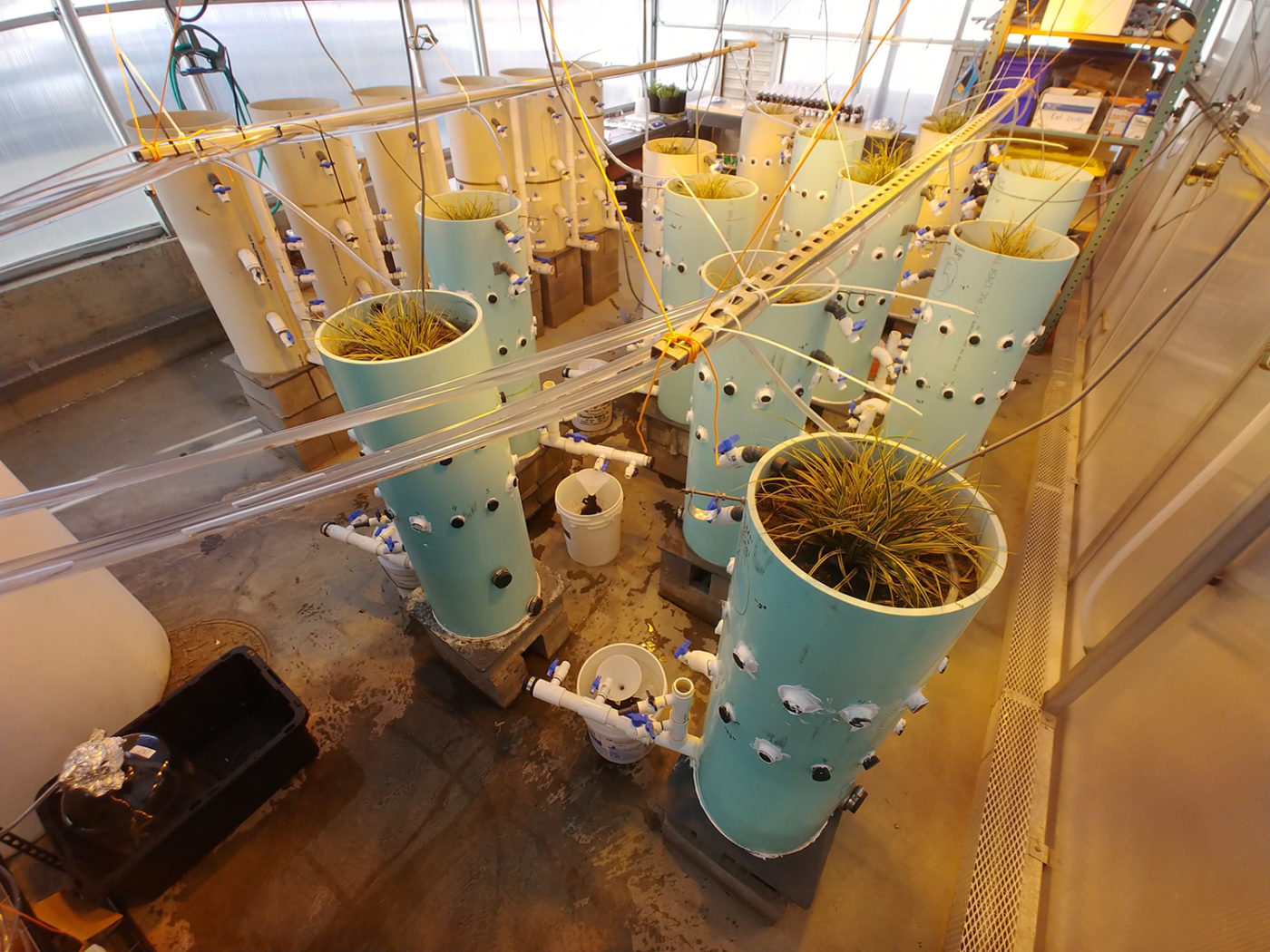A recent paper published by our own Chelsea Mitchell, Dr. Anand Jayakaran, and Dr. Jennifer McIntyre examines the stormwater mitigation effects achieved through the utilization of biochar and fungi amendments.
Highlights
- PAHs were removed from stormwater equally well across treatments.
- Biochar and fungi together improve the removal of all other measured contaminants.
- E. coli removal from stormwater improves in Bioretention media with biochar.
- Compost is the main source of PAH content in Bioretention media.
- PAHs in Bioretention media declined over time despite inputs from stormwater.
Globally, stormwater runoff is one of the largest sources of water quality degradation in urban areas. Urban landscapes tend to be dominated by impervious surfaces, which collect contaminants during dry weather and convey them into surface waters via runoff when it rains. These contaminants consist of both chemical and biological pollutants, and they can have severe adverse impacts on humans and ecosystems. Green Stormwater Infrastructure (GSI) is increasingly implemented as decentralized systems for managing stormwater quantity and reducing stormwater pollution. GSI systems facilitate stormwater infiltration into parent soils and support evapotranspirative processes, thereby mimicking some natural hydrologic processes that are otherwise disrupted by the development of urban landscapes.
This paper is publicly available and you can read the full publication on Science Direct.



